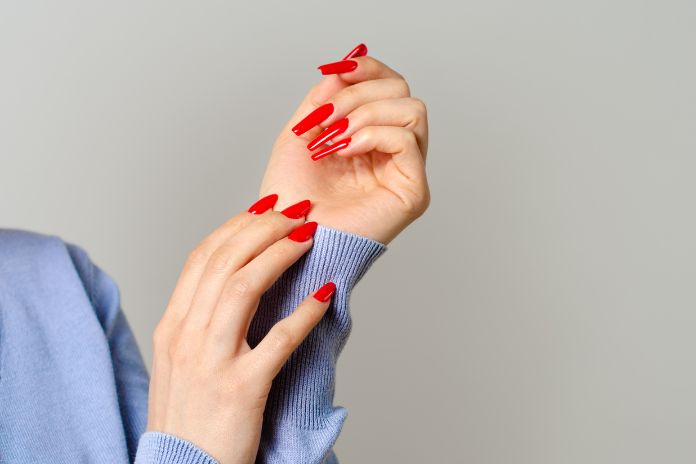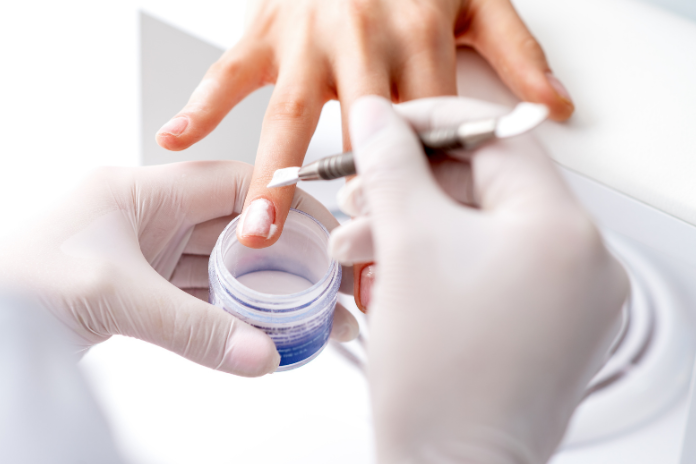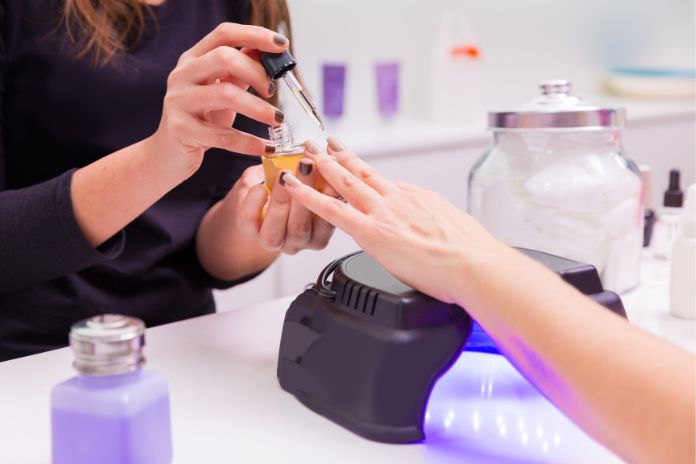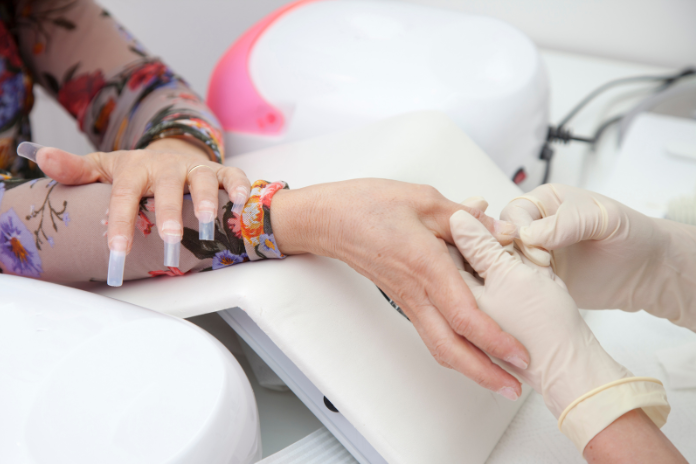Acrylic Nails: What is the Liquid Used?
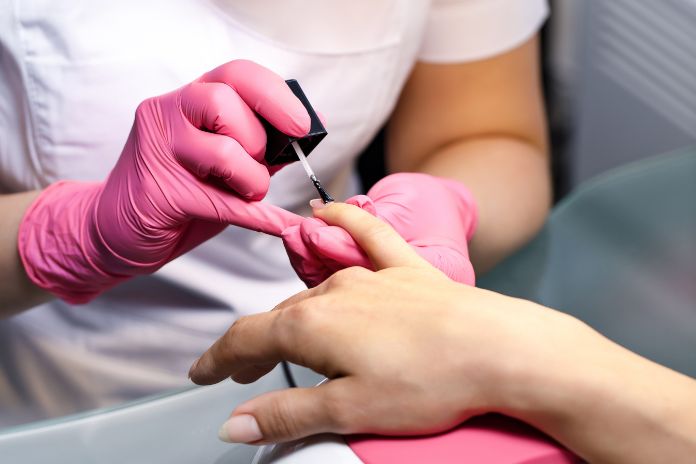
Acrylic nails have been around for decades and have become increasingly popular in recent years. They are a type of artificial nail that is made by mixing a liquid and a powder. The mixture is then applied to the natural nails and shaped to the desired length and shape. Once the mixture dries, it forms a hard, durable layer that can be painted and decorated just like natural nails.
The liquid used for acrylic nails is called monomer. It is a clear liquid that is made up of a combination of chemicals, including ethyl methacrylate (EMA) and methyl methacrylate (MMA). These chemicals work together to create a chemical reaction when combined with the acrylic powder, which results in the hard, durable layer that forms on the nails. While EMA is considered safe for use in nail products, MMA is not and has been banned in many countries due to its potential health risks.
Contents
What are Acrylic Nails?
Acrylic nails are a type of nail enhancement that is made by combining a liquid and a powder to create a hard protective layer over the natural nail. This layer is then shaped and polished to create a smooth and glossy finish. Acrylic nails are a popular choice for those who want to add length and durability to their natural nails.
The Process of Acrylic Nails
The process of creating acrylic nails involves several steps. First, the natural nail is cleaned and prepped. Then, a form is applied to the nail to create a base for the acrylic. Next, a liquid and powder are mixed together to create a thick paste. This paste is then applied to the nail and shaped into the desired shape. The acrylic is then cured under a UV light to harden and set. Once the acrylic is set, it is filed and buffed to create a smooth finish.
Types of Acrylic Nails
There are two main types of acrylic nails: powder and liquid monomer and polyester resin. Powder and liquid monomer is the most common type of acrylic nail and is made by mixing a liquid and a powder together to create a paste. Polyester resin is made by combining a powder and a liquid together to create a hard, durable plastic.
Acrylic nails are available in a variety of colors and finishes, including natural, French, and glitter. They can also be shaped into different styles, such as square, round, or pointed. Many brands offer acrylic nail kits that contain all the necessary tools and materials to create acrylic nails at home.
Cons of Acrylic Nails
While acrylic nails are a popular choice for many, there are some cons to consider. Acrylic nails can be harsh on the natural nail and can cause lifting, which is when the acrylic separates from the natural nail. Acrylic nails also require regular maintenance and can be expensive to maintain. Additionally, the chemicals used in the acrylic liquid (monomer) can cause allergies and skin irritation.
Overall, acrylic nails are a durable and long-lasting option for those who want to enhance the look of their natural nails. However, it is important to consider the potential cons and to properly maintain and care for acrylic nails to prevent any issues.
What is the Liquid Used for Acrylic Nails?
Acrylic Liquid Ingredients
Acrylic liquid is a crucial component of the acrylic nail enhancement process. It is a monomer that is mixed with acrylic powder to create a polymer that hardens to form a durable, long-lasting nail. The main ingredient in most acrylic liquids is ethyl methacrylate (EMA), although some products may use alternative monomers such as methyl methacrylate (MMA) or butyl methacrylate (BMA). It is important to note that MMA is banned in many countries due to its potential health risks, so it is recommended to avoid products containing this monomer.
Other ingredients commonly found in acrylic liquids include stabilizers, UV inhibitors, and plasticizers. These additives help to improve the performance, durability, and appearance of the final nail.
How to Use Acrylic Liquid
To use acrylic liquid, a nail technician will first prepare the natural nail by removing any existing polish and pushing back the cuticles. They will then apply a nail primer to help the acrylic adhere to the natural nail. Next, they will apply a form or nail tip to the end of the natural nail to create the desired length and shape.
The technician will then dip their acrylic brush into the liquid monomer and then into the acrylic powder, creating a small bead of product at the tip of the brush. They will then apply this bead to the natural nail, starting at the base and working towards the tip. The process is repeated until the desired thickness and shape are achieved.
Once the acrylic has cured, the technician will file and buff the nail to smooth out any rough edges or bumps. The final step is to apply polish or other nail art as desired.
Alternatives to Acrylic Liquid
While acrylic liquid is a popular choice for nail enhancements, there are some alternatives available. Dip powder, for example, uses a powder polymer and dip powder activator instead of liquid monomer and acrylic powder. Gel polish is another option, which is cured under a UV or LED lamp to create a hard, glossy finish.
It is important to note that while these alternatives may offer different effects or benefits, they may also have their own cons or limitations. It is always recommended to consult with a professional nail technician to determine the best option for your individual needs and preferences.
Overall, acrylic liquid is a versatile and popular choice for creating durable and long-lasting nail enhancements. With proper technique and care, acrylic nails can provide a natural-looking and beautiful addition to any manicure.

